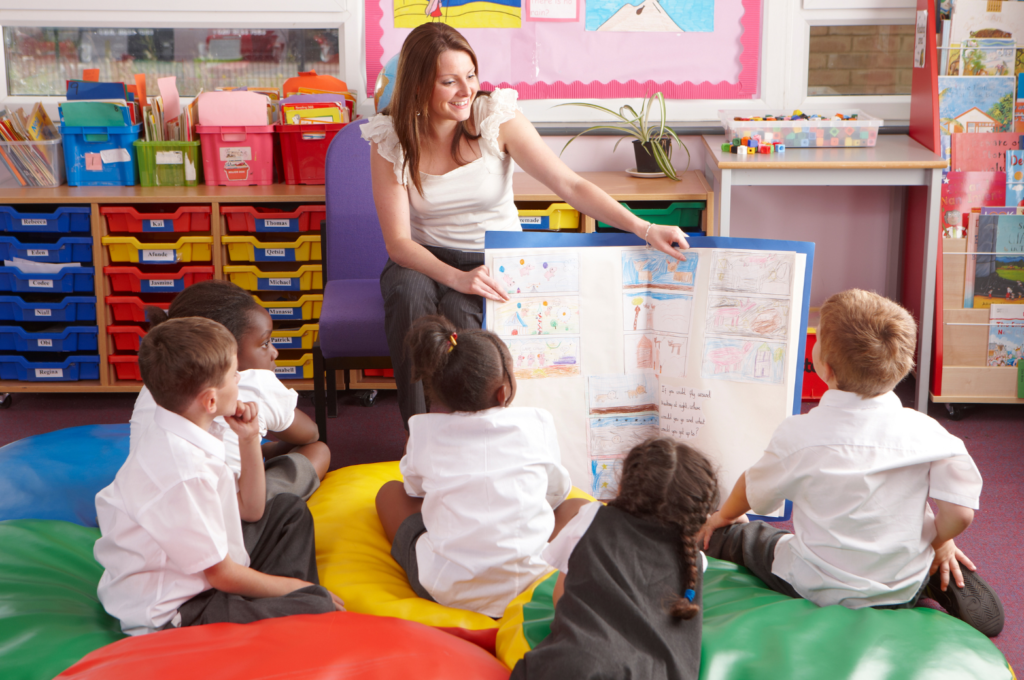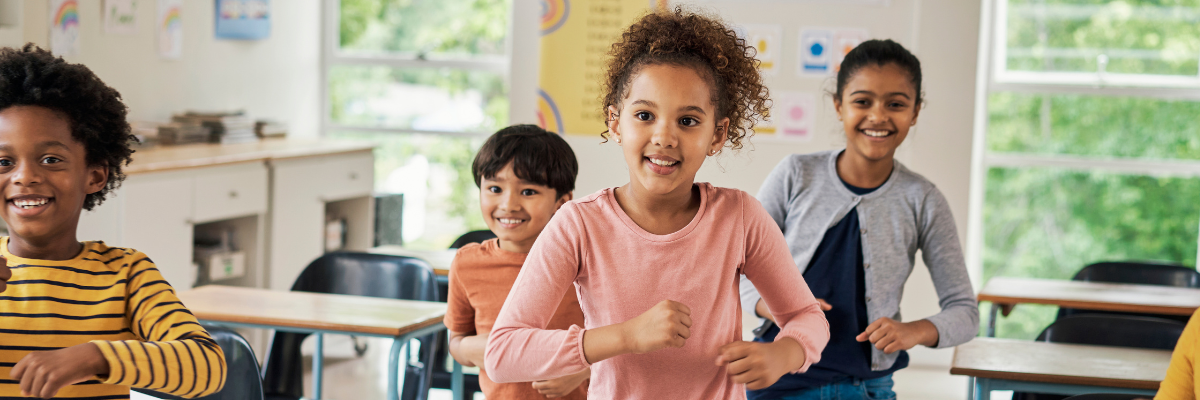Incorporating Movement into Classroom Learning
With increasing pressure on teachers to help their students perform well on standardized tests, many educators are forgoing physical activity in the classroom.
“Only about 1 in 5 teachers provide at least 10 minutes a day of moderate-to-vigorous activity during class,” said Rebecca Hasson, associate professor of movement science, in a March 3, 2023, Education Week article.
Sparks continued in her article, “That’s the minimum recommended by the American College of Sports Medicine for school-age children and adolescents, and it requires exercise intense enough that a child boosts his heart rate and perspires, but can still talk without gasping for breath.”
Children need frequent physical activity for their physical and mental well-being. Many teachers, including one Sharie Murray, have even experienced improved behavior and learning.
“It was amazing….The [activity] break allows the kids to escape a bit, use their energy to perform a dance or workout piece or whatever, and then the kids are able to regroup and then focus on the task at hand,” Murray said in Sparks’ article.
Physical Benefits of Classroom Movement Breaks
Physical activity improves physical health, and when teachers give their students time to move around, they are giving their students so much more than a chance to get their wiggles out.
Ability To Focus
Classroom exercise can improve students’ focus capabilities. For kids so young, sitting at a desk for hours at a time makes learning difficult, but “movement has been shown through countless studies to reduce behavior and mental health issues, improve attention, and create more engaging, meaningful classes,” said Sean Blackmer in a May 2018 Teach Magazine article.
Disease Prevention
According to Dana Kleinjan in her Spring 2020 Master’s Thesis for Northwestern College in Iowa, regular physical activity in the classroom can prevent these conditions and diseases:
- Diabetes
- Stroke
- Heart Issues
- Cancer
- Obesity
- Depression
Proper Development
Kleinjan also showed that “exercise can have many positive effects on a growing brain, and results from brain scans show that a child does their best learning when they are moving around and active.”

Mental Benefits of Classroom Movement Breaks
Exercise can also improve how students think and feel. Physical activity is known to stimulate a boost in mood and mental stamina. Below are the mental benefits of movement breaks.
Better Mental Health
Too many children struggle with anxiety, depression, and suicidal thoughts. Students with these mental health conditions can be benefited by movement, Kleinjan says.
The 9 teen suicides that occurred in 2016–2017 in Grand Junction, CO, prompted Blackmer to pose the question: “When do we start focusing on the mental well-being of students, rather than on state standards?”
According to Blackmer, exercise releases several hormones that deal directly with mood:
- Serotonin helps to regulate students’ moods.
- Endorphins and cortisol both help to lower and fight stress.
- Dopamine plays a key role in motivation.
Blackmer explained that students with anxiety or depression can have a more positive outlook when they have the above chemicals running through their brains.
Improved Memory
Just moving around can improve a student’s ability to remember what they are learning.
“Physical activity in the classroom has been shown to increase cognition, memory, and recall,” said Lynn Pantuosco-Hensch in a September 9, 2019, National Education Association article. All teachers need to do is let their students move, and the students’ abilities to complete required learning tasks will increase.
Increased Blood Flow and Cognition
Students spend most of their time at school sitting at their desks.
“After sitting for twenty to thirty minutes, eighty percent of the blood in the body pools in the hips,” said Kleinjan. “Learning becomes more difficult without blood that has fresh oxygen.”
Teachers need to get their students moving. Even standing is better than sitting.
“The [simple] act of standing…increases blood flow, oxygen uptake, and muscular fitness,” added Pantuosco-Hensch.
Frequent exercise also helps students learn!
“Children learn best when moving because it stimulates the neurons and electrical wiring in the brain. The part of the brain that processes movements and actions is the same part of the brain that is responsible for and processes learning,” said Kleinjan.

Ideas To Get Your Students Moving
Classroom exercise doesn’t have to be following a workout video, but it could be. Kleinjan also suggests, “recess time, brain breaks, mindfulness and more.”
Flexible Seating
One easy way to keep students active during class is to use a variety of flexible seating options. “Flexible seating promotes movement while children work, throwing away the traditional seat,” said Kleinjan.
Pantuosco-Hensch suggested a variety of flexible seating options to include in classrooms:
- Physio-balls
- Balance disks
- Ergonomic stools
- Resistance bands as a wiggle bar under a desk
Blackmer suggests too more seating options:
- Pedal desks
- Standing desks
Some teachers may be hesitant to use flexible seating because it could distract students. But it can be done.
“At the beginning of each school year, I go over the rules and expectations of the desks with students. I also explain why the desks are in my classroom. If you want to make positive changes in your classroom, then you have to explain to students the purpose of your approach,” Blackmer explained. “Once students are on board, and they understand the purpose, there is little to do in terms of behaviour management.”
Exercise Activities
Find fun ways to motivate students to stay active. Patuosoco-Hensch does this with cheap pedometers that track students’ steps. Her students set step goals and have fun trying to achieve them.
Don’t hesitate to take the kids outside. “Outdoor space allows for plenty of gross motor movement,” Pantuosco-Hensch said.
You can also try short YouTube exercise videos: yoga, Zumba, kickboxing, U-jam, weight-lifting, etc. Whatever activity you choose, “physical activity should become an expectation [for your students] during the school day,” Patuosco-Hensch encouraged.
New Physical Skills
You don’t have to focus only on active exercise. Sometimes, even simple new physical skills can be the activity break your students need.
“One year I taught my 6th grade students how to juggle. Each day we took two breaks of 3–5 minutes to practice during the 50-minute class,” Blackmer said.
If you don’t know how to juggle, here are some other physical skills you could teach your students:
- Singing
- Acting
- A choreographed dance
- Finger snapping
- Flexibility
- Clapping games (“The Cup Song,” “Lemonade, Crunchy Ice,” etc.)
- Cartwheels
- Handstands (make sure the environment is safe)
- Magic tricks
Pair Classroom Exercise With Studies Weekly!
With Studies Weekly in your toolkit, including physical activity in the classroom is easy! It simplifies lesson planning and work time, so teachers can easily work movement into the schedule.
If teachers are concerned with not having enough time for “exercise snacks,” they can start with one 1-minute break, then gradually increase the amount of exercise time throughout each day.
“Even with one minute, you can start to see improvements in energy and refocusing,” Sparks concluded.
Try Studies Weekly today and help your students move!
